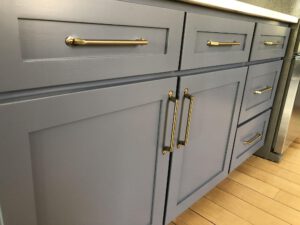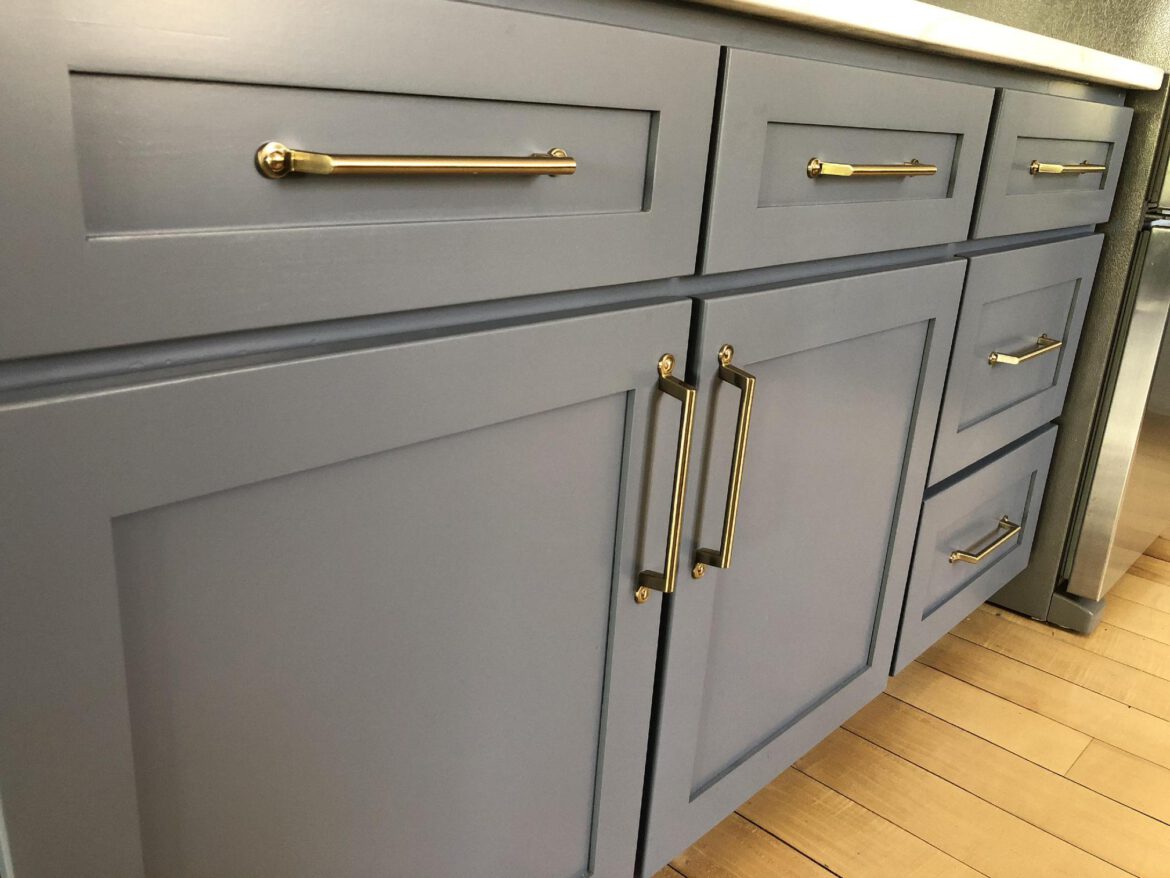Cabinet painting is an easy and cost-effective way to give your kitchen a fresh look. But there are a few things you should consider before you start the process.
First, make sure your cabinets are clean and free of grease. This will prevent the paint from absorbing into the cabinet surfaces and creating drips when you’re working.
Preparation is the key to a successful paint job. It includes sanding and cleaning surfaces, de-glossing surfaces that may have been previously painted or stained, and preparing the surface for primer and painting. If you skip these steps, your new paint will not adhere properly, and you may end up having to repaint it sooner than expected.
Before you begin painting your cabinets, it’s important to remove all hardware and doors so that you can easily reattach them when the project is complete. This can be challenging if you have to remove more than one door at a time, so label each door with its corresponding hardware location and place them in plastic bags for easy reattachment.
To prepare your cabinet for painting, you will need to clean and sand the wood thoroughly. Then, use painter’s tape to mark the hinge and hardware locations on each door and drawer.
Next, prepare your work station and set up a drying rack to catch drips. You can create a drying rack by setting up two small ladders on top of each other and screwing eye hooks into each 2×4.
Once your work station is set up, it’s time to paint. Choose a high-quality paint with a durable finish to prevent chipping and cracking. A satin, semi-gloss, or gloss paint is best for kitchen cabinets.
Apply the first coat of primer to your cabinet’s interior and exterior. Brush or roll the primer on the surface in the grain of the wood; tip off the brush lightly to follow the underlying structure of the paint.
You will need to repeat this process twice for good coverage. Allow the primer to dry for about a couple of hours, then continue with the second coat.
Primer is a thin, sticky layer that prepares the surface to accept your paint. It creates a better base for your paint to adhere to and is also important for color saturation and durability.
When painting cabinets, it’s important to use a high-quality primer because it can help prevent the original color from showing through and create a more even tone for your new paint. In addition, it can protect the wood from dust and help the paint dry more quickly.
There are many different types of primers available for kitchen cabinet painting, including oil-based and water-based. You’ll need to choose one that’s compatible with the type of paint you want to use, and be sure it has an odor- or stain-blocking feature.
Oil-based primers tend to fill the grain of the wood more efficiently than water-based primers, which is why they’re often recommended for painting oak cabinets. If your cabinets have a lot of open pores, however, you’ll need to fill them with spackling before painting.
You can also apply shellac-based primers to the surface of your cabinets if you’d like a smooth, glossy finish. These primers can be used on both bare wood and manufactured composites like MDF. They’re fast-drying, and they’ll block most stains.
If your cabinets are made of laminate, you’ll need to choose a primer that is specifically designed to adhere to this type of material. This will make the process easier and less messy, as you won’t have to sand down the existing finish.
Hybrid primers are another option for priming wood cabinets, but they don’t fill the grain as well as oil-based primers, so you may need to sand more often. If you have oak cabinets, oil-based primers are the best choice because they fill in the grain and provide excellent adhesion.


